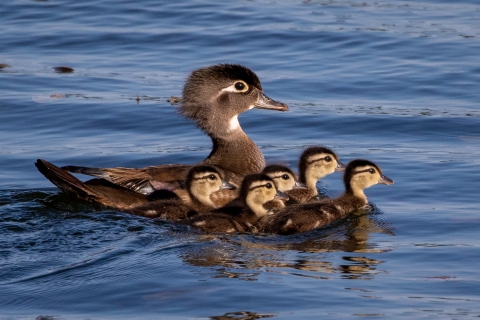The Tamarac Wetland Management District was established in 1987. The purpose of Tamarac Wetland Management District is to serve as waterfowl production areas that are subject to all the provisions of the Migratory Bird Conservation Act.
Visit Us
The district office is located at Tamarac National Wildlife Refuge in Rochert, Minnesota. If you have land within Tamarac’s district of Beltrami, Cass, Clearwater, Hubbard or Koochiching counties in Minnesota and want to provide a place for wildlife, contact our Private Lands Biologist about the Partners for Fish and Wildlife program at 218-847-2641.
Tamarac Wetland Management District is made up of private land partnerships and conservation easements so there are currently no opportunities for visitors.
Location and Contact Information
- Tamarac Wetland Management DistrictView Details35704 County Highway 26 Rochert, MN 56578-9638
About Us
Tamarac Wetland Management District is one of eight wetland management districts within Minnesota. Located in north central Minnesota, where the pines meet the prairie. Tamarac Wetland Management District stretches more than 10,600 square miles in Beltrami, Cass, Clearwater, Hubbard and Koochiching counties.
Our Species
Wood ducks are one of the most colorful of North American waterfowl. These ducks not only feed on aquatic plants, they'll also venture out to dine on the lush green plants of the water’s edge and woodlands. Wood Ducks prefer the mixed conifer and hardwood forests of the north to the prairie potholes. Unlike most other ducks, the wood duck has sharp claws for perching in trees. Having thousands of wetlands interspersed among these forests, the district provides these cavity nesters a safe place to raise their young.
The American woodcock lives in young forest and shrubby areas often near streams, rivers and wetlands. Woodcock eat worms, which they catch by probing in the soil with their long bills. Woodcock is only one species of many that are dependent upon young forests that have been in decline in recent years. It is a high priority to enhance these declining habitats within the district with mechanized equipment working with private, state, federal and tribal partners.
The rusty patched bumblebee is an endangered species that once occupied the grasslands and tall grass prairies of the upper midwest, but most grasslands and prairies have been lost, degraded or fragmented by conversion to other uses. Bumble bees need areas that provide nectar and pollen from flowers, nesting sites - underground and abandoned rodent cavities or clumps of grasses - and overwintering sites for hibernating queens in undisturbed soil. As pollinators, rusty patched bumble bees contribute to our food security and the healthy functioning of ecosystems, that are necessary not only for native wildflower reproduction, but also for creating seeds and fruits that feed a diversity of wildlife. The district works with landowners to enhance habitat by planting areas with native grasses and flowers.

















